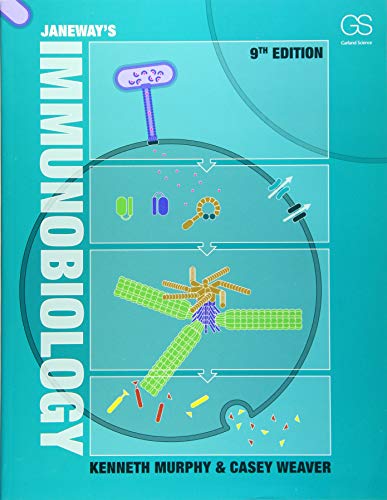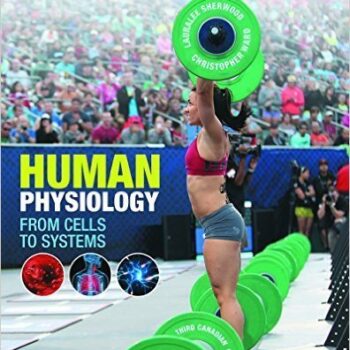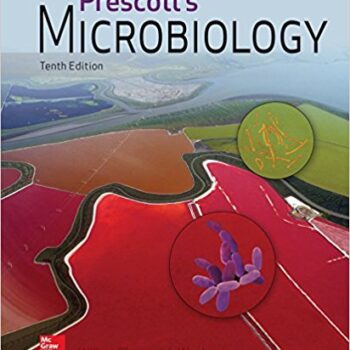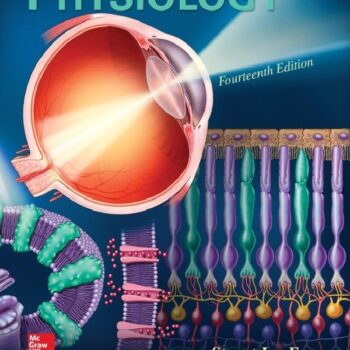What’s going on in the medical school? Those who are getting ready for their immunology major in that case, as long as you use Kenneth Murphy’s Immunobiology 9th Edition you are in the right spot. We know how tough immunology can be, and that’s why we created this test bank to make your studying easier and more effective. Consider this test bank as a strength for you to be successful and as well pass all your immunology courses.
Reasons Why You Should Get Our Test Bank for Immunobiology 9th Edition
Having an extensive amount of additional practice questions that simulate actual exams is beneficial, isn’t it? Well, our test bank for Immunobiology 9th Edition allows students to have just that. The purchase of this test bank will give you the opportunity to:
- Hundreds of multiple-choice questions: These questions will most probably form part of the examinations you will be sitting for. This will help you get familiar with the types of questions you can expect and ensure that you are prepared to answer them.
- Comprehensive answers to each of the questions: We do not just provide you with answers; we provide you with not only answers but explanations. This will help you fully comprehend the concepts concerning the correct and wrong answers.
- Assistance in terms of knowing what you have mastered and what needs more effort: With more practice and test questions answered, topics that have been mastered become very obvious, as well as the ones that require a lot more emphasis. This allows you to ensure that you will be making the most out of your study time.
Key Topics Covered in Our Immunobiology 9th Edition Test Bank
Our test bank is based on the concepts available in Immunobiology 9th Edition as it provides an encompassing view of the topics presented. These are the major aspects that we can highlight to ensure clarity:
- The Immune System: The immune system is the most crucial point of immunology. Our test bank comprises the classifications of immune cells and includes the lymphatic system as well.
- Innate Immunity: Such questions include those concerning the physical barriers and first line of defense against pathogens the complement system activation, and the functions of neutrophils and macrophages.
- Adaptive Immunity: This will also include antibodies that will respond to lymphocytes, nd T cells, and how the immune system acquires the ability to remember and specifically respond to a given pathogen.
- Immunological Tolerance: the question of how the immune system recognizes harnessed or out aegis and the reasons protecting the body from its cells is the essence of this topic.
- Hypersensitivity and Autoimmunity: This is one of the most important parts that concentrates on the unacceptable interference of the immune system towards the body which causes disease conditions.
- Immunodeficiency: This explores the different types of sources that will include tissues that have been affected by immune systems and other various causes.
- Vaccines and Immunotherapies: We shall explore the fascinating world of vaccines and how they operate, and also review the current advances in immunotherapy to treat diseases, for example, cancer.
How to Use Our Test Bank to Enhance Learning Potential
This is a straightforward way of ensuring that you utilize our Immunobiology 9th Edition Test Bank effectively:
- Start early: Plan and use the study materials as soon as you are offered them so that you leave enough time for learning and revising.
- Go through the questions in order: A metronome is not an ideal option for developing music pieces, and so do not encourage using a chunking approach; rather start answering the questions in order starting from the ones that you find most difficult.
- Analyze your mistakes: It is assumed that you possess that solution, but should you happen to be mistaken regarding the question’s solution, do not assume that qthe uestion is out of the game as you were able to provide the right solution.
- Make a study timetable: With the help of our test bank, you can set a study routine that works for the particular concepts you are yet to grasp.
- Do not stick to one way of studying only: Practicing tests is not the only option. You may also revise the information by using flashcards, creating notes, and talking with fellow students.
Advantages of Accessing Our Immunobiology 9th Edition Test Bank
Here comes the reason for not ignoring our test bank:
- Improve Self-esteem: It is clear that if you understand the concepts and materials studied before the examination, it is highly likely that your confidence in yourself will be higher.
- A better grasp of the material: Trying out tutorial exercises promotes viewing the ideas in different ways, hence enhancing comprehension.
- Improved results on examinations: The practice offered in our test bank can affect the performance of an exam positively.
- For the busy executives: When you direct your studying efforts into sections providing additional help, you tend to save time and energy, which improves your learning experience.
Summary
A good investment is our Test Bank for Immunobiology 9th Edition as it will be in your interest in the future. It is a severe instrument that aids in mastering the ideas and ggettingto know the areas that require further effort for understanding the material, and all this boosts your confidence to sit for the examinations. Remember, what the future holds for you as a person in the medical profession is worth it.
Test Bank For Immunobiology 9th Edition By Kenneth Murphy
Janeway’s Immunobiology, 9th Edition
Chapter 5: The Generation of Lymphocyte Antigen Receptors
Primary immunoglobulin gene rearrangement
5-1 Immunoglobulin genes are rearranged in the progenitors of antibody-producing cells
5.1 Multiple choice: The exon encoding the V region of an immunoglobulin protein is generated by a process of somatic recombination. This recombination event brings V gene and J gene segments together:
A. In all cells of the body to encode a V region sequence
B. To generate maximum diversity in the CDR3 sequence of the V region
C. By alternative RNA splicing to encode a V region sequence
D. By a precise mechanism that never adds or loses nucleotides at the junction
E. To generate a single exon encoding the entire immunoglobulin protein
5-2 Complete genes that encode a variable region are generated by the somatic recombination of separate gene segments
5.2 True/False: Most eukaryotic genes are encoded in a set of exons that are brought together to form a contiguous protein coding sequence by the process of mRNA splicing. In contrast, immunoglobulin genes use somatic recombination of gene segments and not mRNA splicing to generate the final mRNA that is translated into protein.
5-3 Multiple contiguous V gene segments are present at each immunoglobulin locus
5.3 Multiple choice: Different individuals can have different numbers of functional V gene segments as well as different numbers of constant region genes. This type of genetic polymorphism between individuals indicates that:
A. The antibody heavy and light chain loci undergo more frequent mutation than other genes in the genome.
B. The recombination machinery is active in germ cells.
C. Individuals only need κ or λ light chains, but not both.
D. The precise number of antibody gene segments in an individual is not important.
E. Antibody gene segments underwent more frequent duplication during evolution than other genes in the genome.
5-4 Rearrangement of V, D, and J gene segments is guided by flanking DNA sequences
5.4 Multiple choice: Recombination signal sequences are conserved heptamer and nonamer sequences that flank the V, J, and D gene segments which undergo recombination to generate the final V region coding exon. Some of these have 12-nucleotide spacers between the heptamer and nonamer, and others have 23-nucleotide spacers. The reason recombination signal sequences come in these two forms is:
A. To ensure the correct assembly of gene segments so that a VH recombines to a DH and not to another VH, for instance
B. To ensure that the heptamer and nonamer are found on the same face of the DNA double helix
C. To ensure that κ, λ, and heavy chains recombine within a locus and not between loci
D. To ensure that κ, λ, and heavy chain gene segments do not undergo recombination with non-immunoglobulin genes
E. To ensure that the RAG recombinase cuts the DNA between the last nucleotide of the heptamer and the coding sequence
5-5 The reaction that recombines V, D, and J gene segments involves both lymphocyte-specific and ubiquitous DNA modifying enzymes
5.5 Figure Q5.5 shows the germ-line configuration of three V gene segments (#1, 2, 3), and two J gene segments (#4, 5). Which of the choices below represents a DNA configuration that would result from V-to-J recombination?













